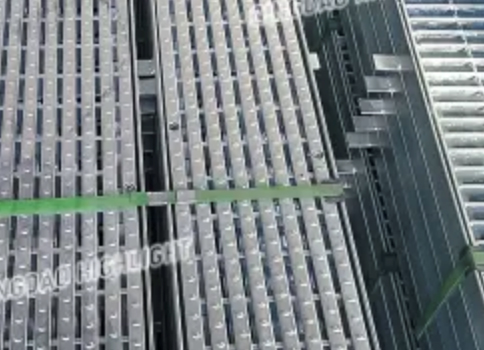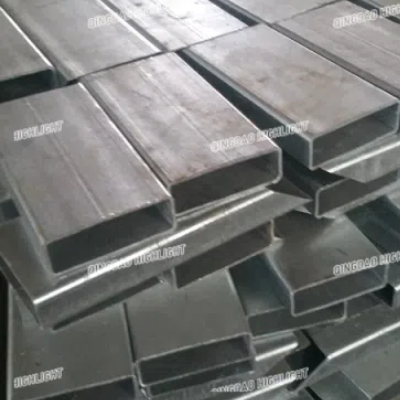
Chemical resistant hoses are essential in industrial settings. They prevent leaks, degradation, and accidents. Choosing the right hose is critical. Using the wrong one can lead to serious risks for workers and the environment.In this post, you’ll learn about the different types of chemical resistant hoses and how to select the best one for your needs.
Understanding Chemical Resistant Hoses
What are Chemical Resistant Hoses?
Chemical resistant hoses are specifically designed to transport various chemicals without deteriorating. Their primary function is to protect against chemical leaks, spills, and damage during transfer. These hoses are made from specialized materials that resist the corrosive effects of chemicals. Their construction typically involves materials like PTFE (Polytetrafluoroethylene), rubber, and composite compounds, ensuring they remain intact even in harsh conditions.
The key characteristic of chemical resistant hoses is their ability to withstand not just corrosion, but also extreme temperatures, high pressure, and physical wear. This resistance ensures that harmful chemicals can be transferred safely, reducing the risks of exposure or environmental contamination.
Why Do Chemical Hoses Need Special Materials?
Most regular hoses are made from standard materials like PVC or rubber, which can degrade when exposed to chemicals. Over time, the chemicals cause these materials to weaken, crack, or even dissolve. This degradation compromises the hose's integrity, increasing the risk of leaks or rupture.
Specialized materials, such as PTFE, rubber compounds, and metals, are used for chemical resistant hoses because of their unique properties. For instance, PTFE is extremely resistant to many chemicals, while rubber compounds can offer flexibility and durability under pressure. Metal hoses, such as those made from stainless steel, are essential for high-temperature environments.
How is Chemical Resistance Tested and Measured?
The chemical resistance of hoses is tested through a variety of methods to simulate real-world conditions. This can include exposing hoses to specific chemicals, pressure, and temperature variations. The hose's performance is then monitored to identify any degradation over time.
There are several industry standards that guide these tests. For example, ISO 11237 and ASTM D380 outline how hoses should be tested for chemical compatibility, pressure tolerance, and temperature limits. Compliance with these standards is crucial for ensuring the hose performs as expected in industrial applications.

Types of Chemical Resistant Hoses
PTFE Hoses — Features and Best Uses
PTFE hoses are considered the best option for aggressive chemicals due to their unmatched chemical resistance. PTFE is highly inert, meaning it doesn’t react with most substances, making it ideal for transporting reactive or corrosive chemicals.
These hoses also have high temperature tolerance and can withstand pressures without deteriorating. Common applications include the pharmaceutical and chemical processing industries, where the need for purity and safety is paramount.
Composite Hoses — Benefits and Typical Applications
Composite hoses are made up of several layers of materials, including textiles and films. This multi-layer construction makes them lightweight, flexible, and capable of handling a variety of chemicals. The design helps the hoses remain flexible under both high and low pressure conditions.
These hoses are commonly used in industries like oil and gas, where chemical compatibility and flexibility are key, especially when transporting volatile substances in varied environments.
Rubber Hoses — Versatility and Limitations
Rubber hoses are among the most versatile options available, providing resistance to acids, alkalis, and various solvents. However, their limitations come into play when they are exposed to extreme temperatures or highly aggressive chemicals, which can cause degradation over time.
Despite these limitations, rubber hoses remain the go-to solution for many industrial applications, including agriculture, automotive, and food processing, where moderate chemical resistance is required.
Metal Hoses — Durability in Extreme Conditions
Metal hoses, particularly those made from stainless steel, are highly durable and ideal for use in high-temperature and high-pressure environments. Their corrosion resistance allows them to maintain structural integrity even when exposed to harsh chemicals and extreme temperatures.
Common applications for metal hoses include the oil and gas industry and chemical processing plants, where the need for durability and heat resistance is critical.
Materials Used in Chemical Resistant Hoses
PTFE (Polytetrafluoroethylene)
PTFE is widely regarded as one of the best materials for chemical resistant hoses due to its ability to resist virtually all chemicals. It is often used in environments where purity and safety are essential, such as in pharmaceutical or food processing industries.
The material’s resistance to both heat and corrosion makes it a reliable choice for handling aggressive chemicals, although its flexibility can be a limitation in certain applications.
EPDM (Ethylene Propylene Diene Monomer)
EPDM hoses are highly resistant to heat, chemicals, and weather. These properties make EPDM a good choice for moderately aggressive chemicals. The material is particularly resistant to acids, alkalis, and ozone, but it may not perform as well in extremely high temperatures.
Industries that use EPDM hoses include automotive, construction, and food and beverage manufacturing.
FKM (Fluorocarbon Rubber)
FKM hoses, also known as Viton hoses, are ideal for aggressive chemicals like solvents and oils. FKM is known for its high-temperature resistance, making it perfect for environments that involve both heat and aggressive chemicals.
Applications in chemical processing, refineries, and automotive industries benefit from the durability and resistance of FKM hoses.
Stainless Steel and Metal Alloys
Stainless steel and other metal alloys are used in hoses to provide resistance against corrosion and strength in high-pressure and high-temperature environments. These materials are essential for industries like oil and gas, petrochemical, and aerospace, where durability is a key concern.
How to Choose the Best Hose for Chemicals — Key Factors to Consider
Chemical Compatibility
When selecting a hose, chemical compatibility is the most important factor to consider. Using chemical compatibility charts can help determine which materials will resist specific chemicals effectively. Considerations include the chemical concentration, temperature, and the material’s resistance to the particular chemical being transferred.
Temperature and Pressure Ratings
Matching the hose’s temperature and pressure ratings to the operational conditions is crucial for safety. Overloading a hose with temperature or pressure beyond its specified limits can cause failure, leading to leaks or catastrophic damage.
Hose Size, Length, and Flexibility
Choosing the right hose size and length ensures a smooth and safe transfer of chemicals. Flexibility is also a key consideration, especially in tight spaces where the hose must bend without breaking or kinking.
Bend Radius and Flexibility Requirements
A hose’s bend radius plays a significant role in maintaining its functionality. A hose that is too stiff can create stress points that lead to cracks, leaks, or damage over time.
Electrical Conductivity and Static Dissipation
When dealing with flammable chemicals, electrical conductivity becomes important to prevent the build-up of static electricity. Some hoses are designed to dissipate static charges, making them safer in hazardous environments.
Environmental and Safety Factors
Environmental factors, such as UV exposure, ozone, and abrasions, can degrade hoses over time. Safety features like reinforced covers and shock-resistant materials are essential to prolong the hose's life and ensure minimal risk.

Hose Construction and Design Features
Inner Tube Materials and Chemical Resistance
The inner tube of a chemical resistant hose is the first line of defense against chemical damage. Materials like PTFE and UHMWPE (Ultra High Molecular Weight Polyethylene) offer excellent chemical resistance, while also maintaining the hose’s performance in specific environments.
Reinforcement Layers for Pressure and Flexibility
Reinforcement layers in hoses, such as wire helixes or textile braids, provide structural strength. These layers are critical for maintaining pressure tolerance and flexibility, allowing the hose to resist collapse under pressure and remain pliable in various applications.
Outer Cover Protection and Abrasion Resistance
The outer cover of a hose is designed to protect it from external damage, such as abrasion or UV exposure. Materials used for outer covers include rubber, nylon, and PVC, each offering specific advantages based on the intended use and environmental conditions.
Types of Fittings and Attachment Methods
Hose fittings ensure secure, leak-proof connections between the hose and other systems. Different fittings, such as crimped, swaged, or camlock fittings, must match the hose material to ensure durability and safety in chemical transport.
Common Industrial Applications of Chemical Resistant Hoses
Chemical Manufacturing and Processing
Chemical resistant hoses are essential in chemical manufacturing, where they are used to transport raw materials, intermediates, and final products. They are critical in reactors, mixing tanks, and pipelines, ensuring safe and efficient handling.
Oil and Gas Industry Usage
In the oil and gas industry, chemical resistant hoses are often used to transfer volatile substances under high pressure and temperature. Composite or metal hoses are preferred due to their durability and ability to handle extreme conditions.
Pharmaceutical and Food-Grade Hose Requirements
Regulations in the pharmaceutical and food industries require hoses that meet strict standards for cleanliness and safety. FDA-approved chemical resistant hoses ensure safe transfer of chemicals in sensitive environments.
Laboratory and Research Applications
In laboratories, chemical resistant hoses are used to transfer chemicals safely in controlled settings. Hoses must meet specific requirements to ensure no contamination occurs during the transfer.
Environmental and Wastewater Management
In wastewater management, chemical resistant hoses are crucial for handling hazardous materials during environmental cleanup. These hoses help prevent leaks and ensure that harmful substances are managed safely.
Conclusion
Chemical-resistant hoses come in various materials, each offering specific benefits. Rubber hoses are durable and resist many chemicals. PVC hoses are lightweight and handle mild chemicals well. Polyurethane hoses are flexible and resistant to oils and solvents. Teflon hoses offer the best resistance to strong acids and solvents. EPDM hoses work well with water-based chemicals and some oils. Choose the right material based on the chemicals you plan to handle.
FAQ
Q: What are the best types of hoses for chemical resistance?
A: Rubber hoses are durable and resistant to many chemicals, oils, and solvents. PVC hoses handle acids, alkalis, and oils. Polyurethane hoses are flexible and resistant to oils and solvents. Teflon hoses offer the highest resistance to strong acids and solvents. EPDM hoses resist water-based chemicals and some oils.
Q: How do I choose the right chemical-resistant hose?
A: Select a hose based on the chemicals you'll use. Rubber hoses work for heavy-duty applications, while PVC is best for mild chemicals. Polyurethane suits industrial use, and Teflon is ideal for harsh chemicals. Always check the manufacturer’s specifications for compatibility.
Q: Can I use any hose for chemical handling?
A: No. Different hoses resist different chemicals. For chemical handling, choose rubber, PVC, polyurethane, Teflon, or EPDM hoses based on your specific needs. Ensure compatibility by reviewing the hose material and the chemicals you intend to use.

















